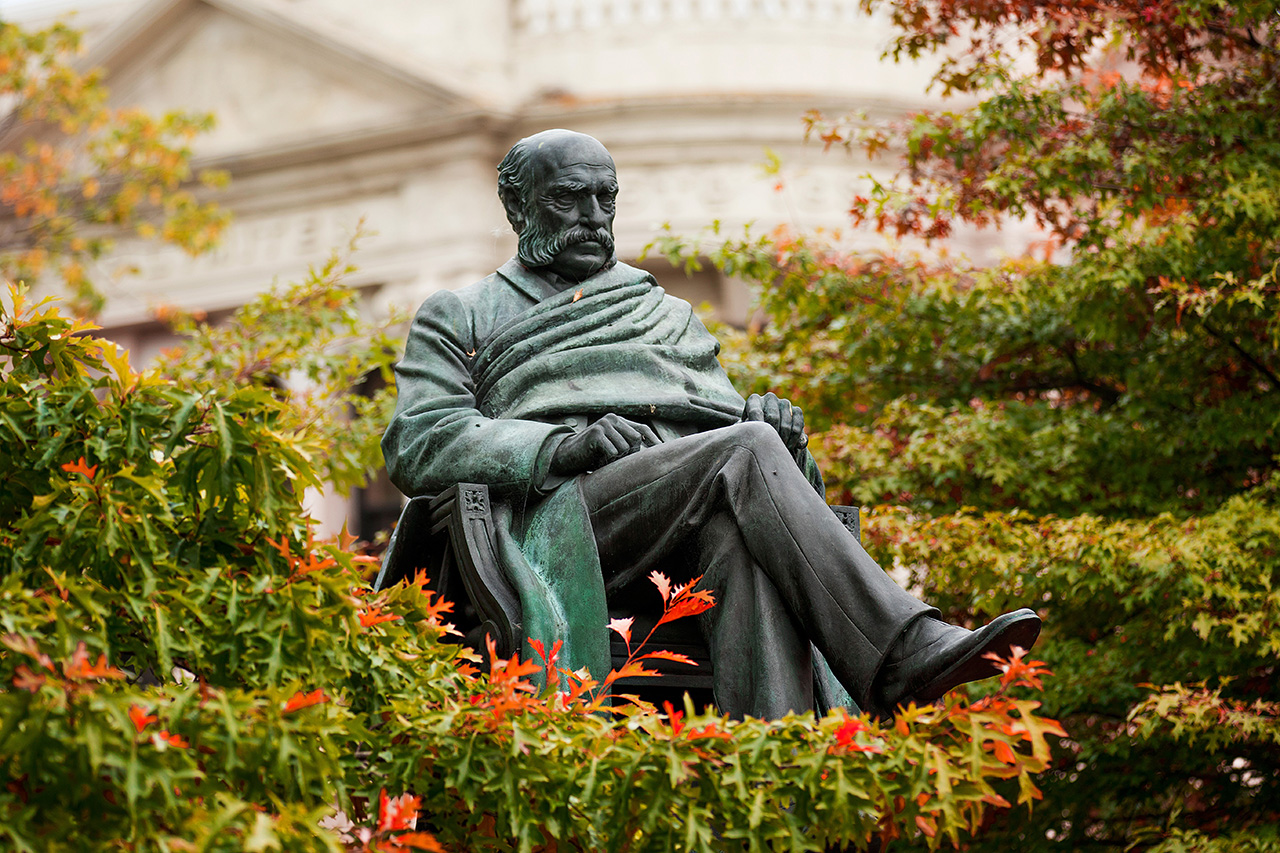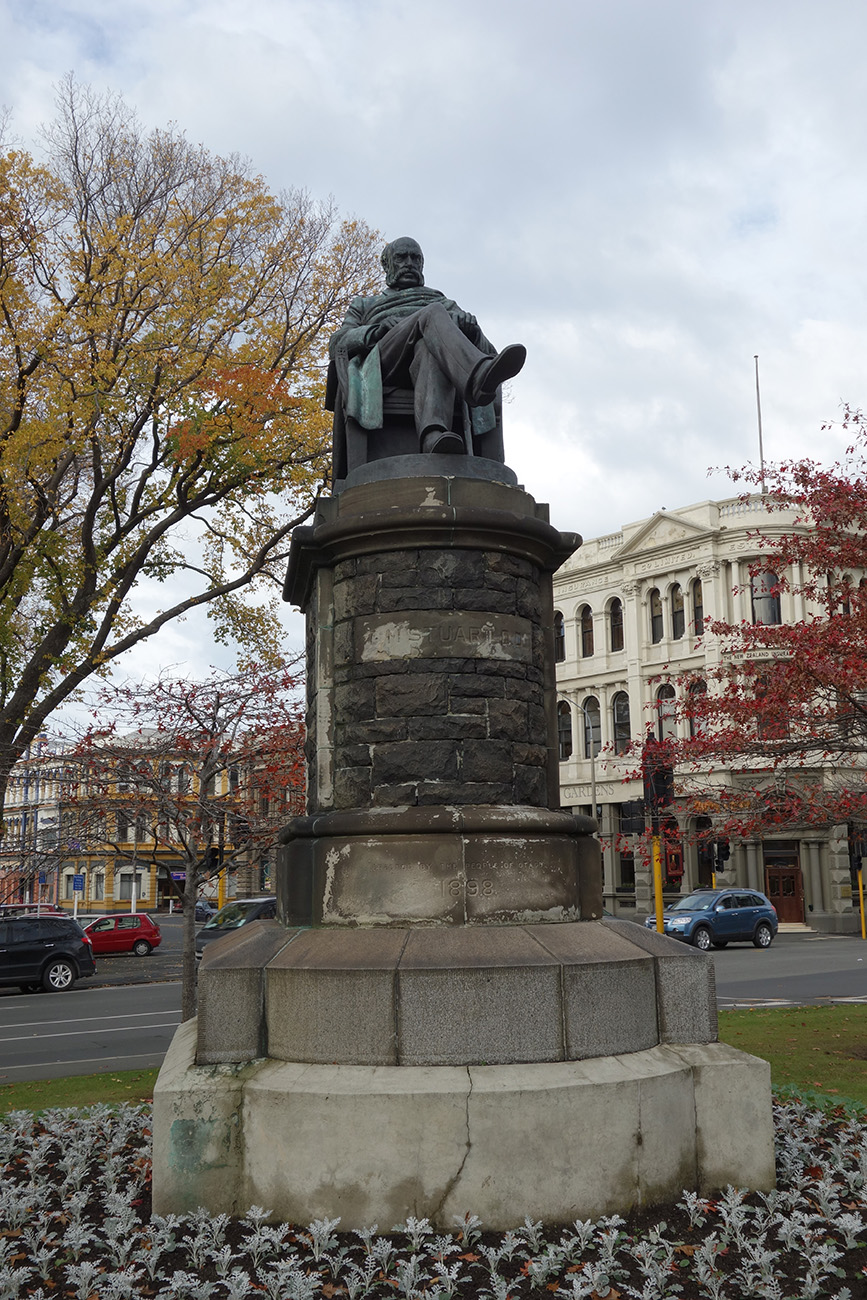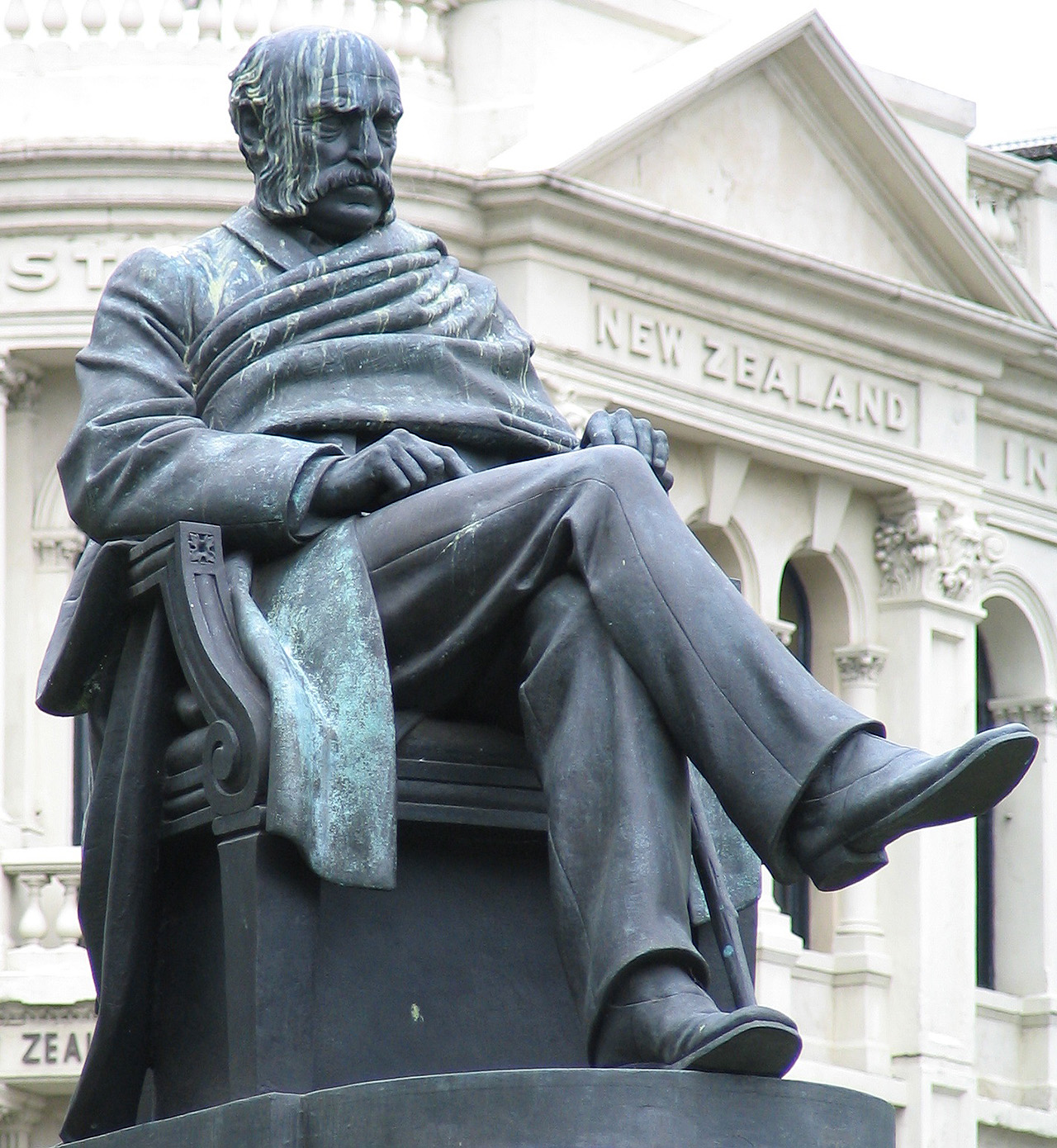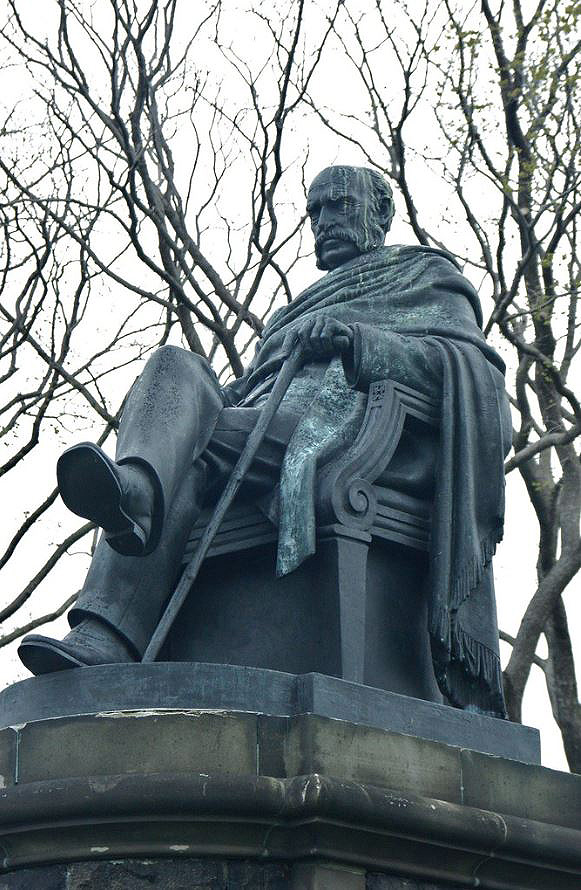Now largely shrouded by trees, the bronze cast Stuart Memorial sits opposite Queens Gardens in Central Dunedin within the extent of the Queens Gardens Historic Area (List No. 9286). Installed in 1898, the statue commemorates the life of Rev. Dr. Donald McNaughton Stuart (1819-1894) who had an immense impact on the people of Dunedin and the wider Presbyterian community through his roles as a church leader and educationalist. This monument has historical and aesthetic significance. The area where the memorial stands was once a wide mudflat near the mouth of the Toitū stream which emptied into awa Ōtakou / Otago Harbour, close to the site of the Toitū Tauraka Waka (List No.9774) which provided Kāti Mamoe and Kāi Tahu peoples access to fresh water and mahika kai sites. Nearby was the early settlement of Ōtepoti. This land was reclaimed in the 1870s using material from the reduction of Ngā Moana e Rua / Bell Hill and is close to some of the earliest sites established after the Free Church Settlement in 1848. Born in Scotland in 1819, Donald McNaughton Stuart was educated at the parish school of Kenmore, worked as a teacher, and later accepted a position at a school in Windsor, England while also studying theology. He completed his studies in Edinburgh after which he became a minister of the Free Church of Scotland. Stuart married Janet ‘Jessie’ Robertson in 1850 and in 1860 seized the opportunity to emigrate to Otago, ‘panting for the exciting labours of planting the gospel in some part of our great Colonial Empire’. In May 1860 he was appointed as first minister of Knox Church (1860-1894). Stuart was a respected, popular and influential public figure known for his ‘genial manner, ready smile, and compassionate interest in people, and for his tolerance and deep commitment to the social expression of his Christian principles’. He was an active member of the Synod of the Presbyterian Church and the synod’s University, Theological College and Church extension committees. In 1872 Stuart was awarded a Doctor of Divinity by the University of St Andrews. A devoted educationalist, Stuart was chairman of the Otago Boys’ and Girls’ High Schools board between 1879 and 1894. He was elected Vice Chancellor of the Otago University council in 1871 where he remained until he was elected Chancellor in 1879. During this time Stuart made significant contributions to the development of the University adding the schools of mines, medicine and law to its foundation subjects. ‘Though Scottish to the backbone and Presbyterian to the marrow’, Stuart was appreciated for his openminded approach to marriage, and was prepared to marry people from different denominations. Stuart’s sudden death in 1894 rocked the citizens of Dunedin and the wider province. He lay in state in Knox Church where he was visited by thousands of people. The day of his funeral was declared a holiday to enable citizens to attend; shops closed, and 15-20 thousand people are reported to have attended. In May 1894, the citizens of Dunedin decided to erect a memorial in recognition of Stuart. The Secretary of the Stuart Memorial Committee wrote to the Council requesting the site where the ‘large lamp stands, near the Triangle’ be granted for the statue. Funds were raised and a premium of 25 guineas granted for the best proposal. In 1896 the proposal by Mr William Leslie Morison who ran Morison’s Art School in Wellington was chosen. The statue is significant as the first major civic commission to be granted to a New Zealand resident artist. Morison depicted Stuart seated cross-legged, wrapped in his ubiquitous plaid, holding a walking stick and sitting in a ‘curule chair’. The plaster model was shipped to England in pieces for casting in bronze. The statue was ‘admitted into the colony free of duty’ and was unveiled on 22 June 1898. Dunn describes the likeness as a work of, ‘uncompromising realism … Stuart emanates energy’. The Statue of Rev. Dr Stuart returned to the eye of the public in 1922 when it was proposed that it and the statue of Queen Victoria be removed to other sites. The area surrounding the memorial was to be transformed into a tramway balloon loop. Other sites were proposed however the tramway balloon was cleared in readiness by July 1922. At the beginning of August it was reported that the statue had been ‘re-erected upon its old site, but with a difference.’ This being that Stuart had been rotated 90 degrees so he faced the Bank of Australasia building. His statue was placed on a pedestal 5 foot higher (1.5 m) built of Leith blue stone and Hobart sandstone and incorporating seating and a flower garden. Despite discussions about moving the statue to coincide with the 125th anniversary of Stuart’s death, and the University’s 150th celebrations, Rev. Dr Stuart remains in the Queens Gardens area today.




Location
List Entry Information
Overview
Detailed List Entry
Status
Listed
List Entry Status
Historic Place Category 1
Access
Able to Visit
List Number
4758
Date Entered
11th November 1987
Date of Effect
11th November 1987
City/District Council
Dunedin City
Region
Otago Region
Extent of List Entry
Extent includes part of the land described as Sec 1 Blk LIV Town of Dunedin (RT 62155), Otago Land District and the Stuart Memorial, thereon.
Legal description
Sec 1 Blk LIV Town of Dunedin (RT 62155), Otago Land District
Stay up to date with Heritage this month
